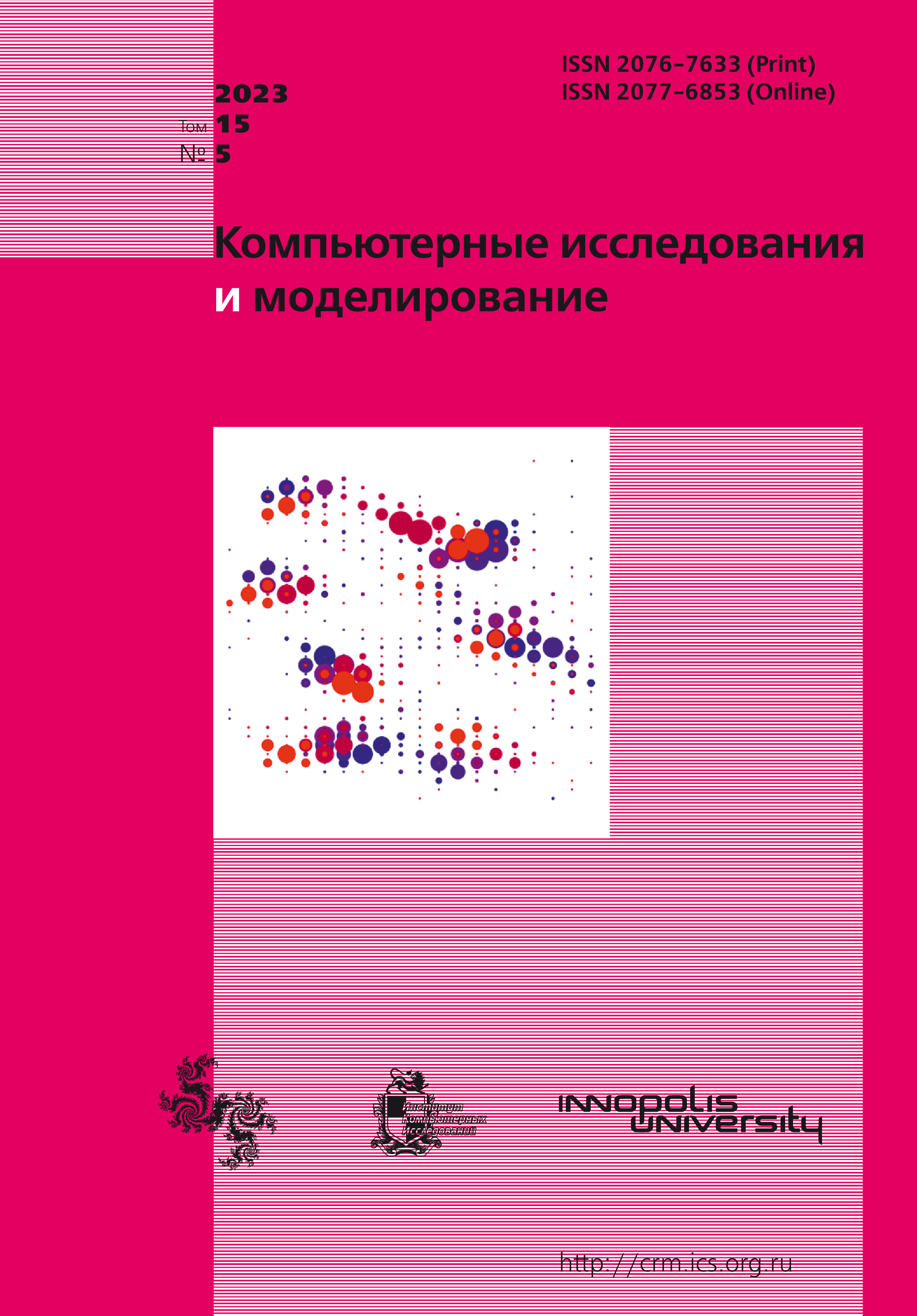All issues
- 2025 Vol. 17
- 2024 Vol. 16
- 2023 Vol. 15
- 2022 Vol. 14
- 2021 Vol. 13
- 2020 Vol. 12
- 2019 Vol. 11
- 2018 Vol. 10
- 2017 Vol. 9
- 2016 Vol. 8
- 2015 Vol. 7
- 2014 Vol. 6
- 2013 Vol. 5
- 2012 Vol. 4
- 2011 Vol. 3
- 2010 Vol. 2
- 2009 Vol. 1
Numerical study of the mechanisms of propagation of pulsating gaseous detonation in a non-uniform medium
 pdf (1854K)
pdf (1854K)
In the last few years, significant progress has been observed in the field of rotating detonation engines for aircrafts. Scientific laboratories around the world conduct both fundamental researches related, for example, to the issues of effective mixing of fuel and oxidizer with the separate supply, and applied development of existing prototypes. The paper provides a brief overview of the main results of the most significant recent computational work on the study of propagation of a onedimensional pulsating gaseous detonation wave in a non-uniform medium. The general trends observed by the authors of these works are noted. In these works, it is shown that the presence of parameter perturbations in front of the wave front can lead to regularization and to resonant amplification of pulsations behind the detonation wave front. Thus, there is an appealing opportunity from a practical point of view to influence the stability of the detonation wave and control it. The aim of the present work is to create an instrument to study the gas-dynamic mechanisms of these effects.
The mathematical model is based on one-dimensional Euler equations supplemented by a one-stage model of the kinetics of chemical reactions. The defining system of equations is written in the shock-attached frame that leads to the need to add a shock-change equations. A method for integrating this equation is proposed, taking into account the change in the density of the medium in front of the wave front. So, the numerical algorithm for the simulation of detonation wave propagation in a non-uniform medium is proposed.
Using the developed algorithm, a numerical study of the propagation of stable detonation in a medium with variable density as carried out. A mode with a relatively small oscillation amplitude is investigated, in which the fluctuations of the parameters behind the detonation wave front occur with the frequency of fluctuations in the density of the medium. It is shown the relationship of the oscillation period with the passage time of the characteristics C+ and C0 over the region, which can be conditionally considered an induction zone. The phase shift between the oscillations of the velocity of the detonation wave and the density of the gas before the wave is estimated as the maximum time of passage of the characteristic C+ through the induction zone.
Copyright © 2023 Lopato A.I., Poroshyna Y.E., Utkin P.S.
Indexed in Scopus
Full-text version of the journal is also available on the web site of the scientific electronic library eLIBRARY.RU
The journal is included in the Russian Science Citation Index
The journal is included in the RSCI
International Interdisciplinary Conference "Mathematics. Computing. Education"






